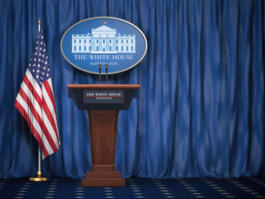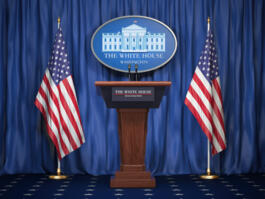The Tug-of-War Driving the Stimulus Debate
Analysis by Scott Rasmussen
The popularity of newly elected President Barack Obama combined with the willingness of most voters to give him the benefit of the doubt is a powerful political force working in favor of the economic rescue plan now being debated on Capitol Hill.
At the same time, even in the troubled economic times we face today, 48% of the nation’s voters say more government spending is generally bad for the economy. The nation’s deeply ingrained reluctance to embrace government spending is an equally powerful political force working against the rescue plan as Obama and congressional Democrats presently conceive it.
These competing forces have created a political tug-of-war in Congress that is making passage of the stimulus bill more difficult than many ever expected.
The tension between these competing forces is highlighted by the views of unaffiliated voters. A majority of unaffiliateds approve of the way the new president is doing his job. At the same time, a majority of unaffiliateds believes that more government spending is generally bad for the economy. This puts elected politicians from competitive states and districts in the spot they hate the most: Having to make a decision when there's no clearly safe political answer.
The numbers bear this out in dramatic fashion. So far, polls show only modest public support for the stimulus plan, and the support has been declining. But roughly 20% of Americans remain undecided about the legislation and they have an overwhelmingly positive view of the president.
If those undecided voters who like Obama were to back the plan, support for it would be just over the 50% mark.
The time factor is also weighing on decision makers. Obama has said that failure to act quickly will lead to an economic catastrophe. Voters are evenly divided as to whether they agree with him or not on this point. Most Democrats agree with the leader of their party. Most Republicans and unaffiliated voters don't.
It remains a mystery why the president was not more involved in selling the rescue package from the beginning. Letting House Speaker Nancy Pelosi and Senate Majority Leader Harry Reid take the lead early on gave the Republican opposition time to emphasize the large amount of new government spending Democrats have packed into the legislation.
Now, to help the pro-stimulus team in the tug of war, Obama has scheduled a Monday night prime-time press conference and several campaign-style stops next week to target wavering legislators. It is likely the president’s efforts will build some support, at least temporarily, for the legislation.
The big unknown is how congressional Democrats will play out their hand. It is possible that their positioning on the topic of more government spending could cancel out any benefits from Obama’s sales effort.
Democrats in Congress also could strengthen the anti-stimulus team by their approach to the plan’s tax cuts. Obama campaigned heavily on a promise to cut taxes for 95% of Americans, congressional Republicans support the notion, and 57% of voters see tax cuts as good for the economy.Forty-five percent (45%) of voters would support a stimulus package with no new spending and a round of tax cuts. Just 15% support a spending-only approach to the rescue plan.
When Obama first proposed the rescue plan, it included $325 billion in tax cuts. House Democrats cut this to $275 billion to make way for more new spending. The version of the plan the Senate is expected to pass early this week will cut away some of that spending in favor of tax cuts, but Pelosi has already vowed to fight these changes.
When all is said and done, though, it's basically a tug-of-war between a president with high job approval ratings and a public’s generic skepticism about government spending.
Rasmussen Reports is a media company specializing in the collection, publication and distribution of public opinion information.
We conduct public opinion polls on a variety of topics to inform our audience on events in the news and other topics of interest. To ensure editorial control and independence, we pay for the polls ourselves and generate revenue through the sale of subscriptions, sponsorships, and advertising. Nightly polling on politics, business and lifestyle topics provides the content to update the Rasmussen Reports web site many times each day. If it's in the news, it's in our polls. Additionally, the data drives a daily update newsletter and various media outlets across the country.
Some information, including the Rasmussen Reports daily Presidential Tracking Poll and commentaries are available for free to the general public. Subscriptions are available for $4.95 a month or 34.95 a year that provide subscribers with exclusive access to more than 20 stories per week on upcoming elections, consumer confidence, and issues that affect us all. For those who are really into the numbers, Platinum Members can review demographic crosstabs and a full history of our data.
To learn more about our methodology, click here.



